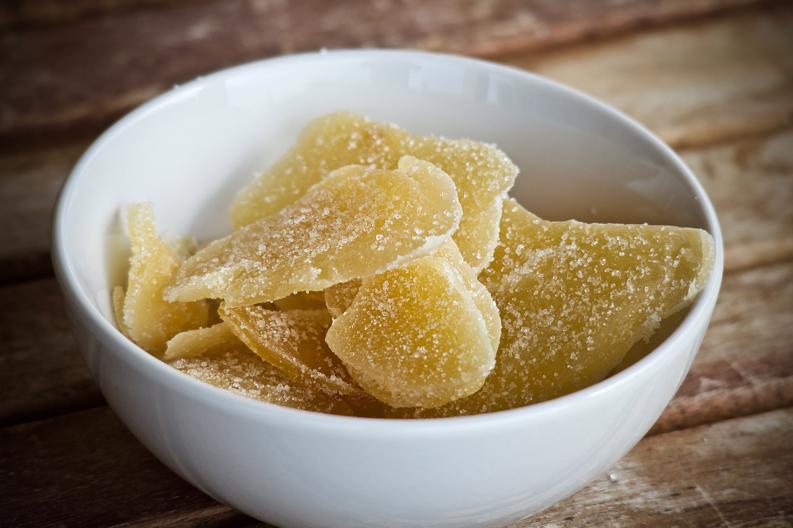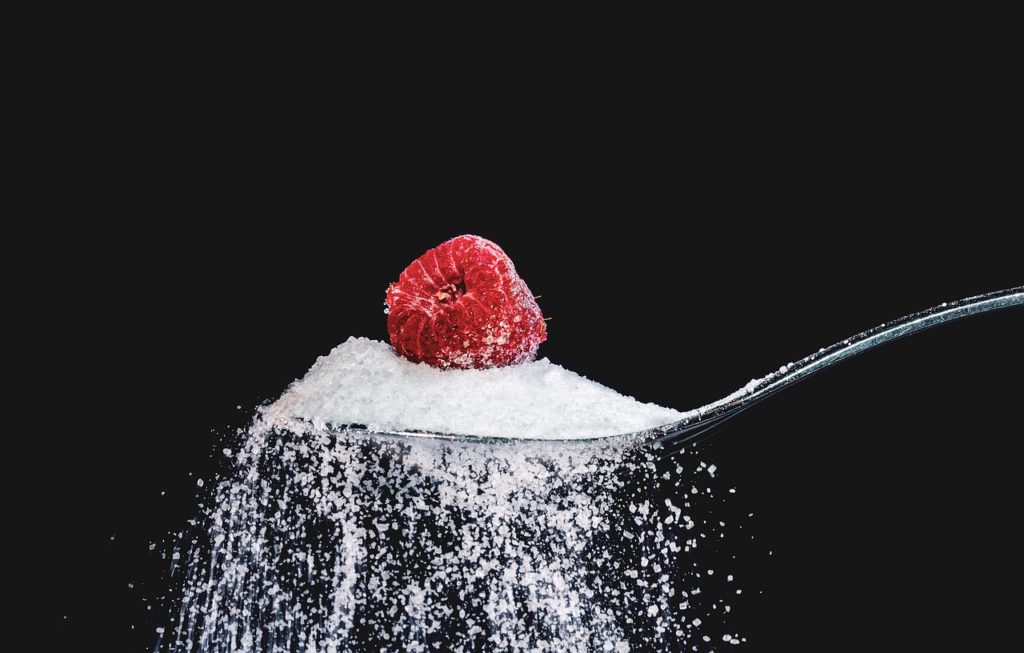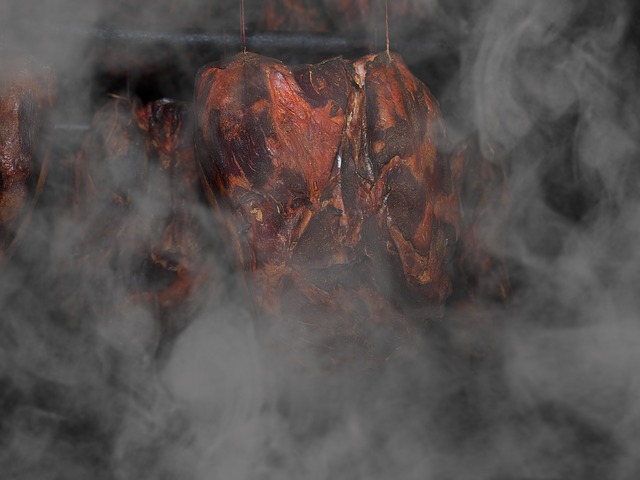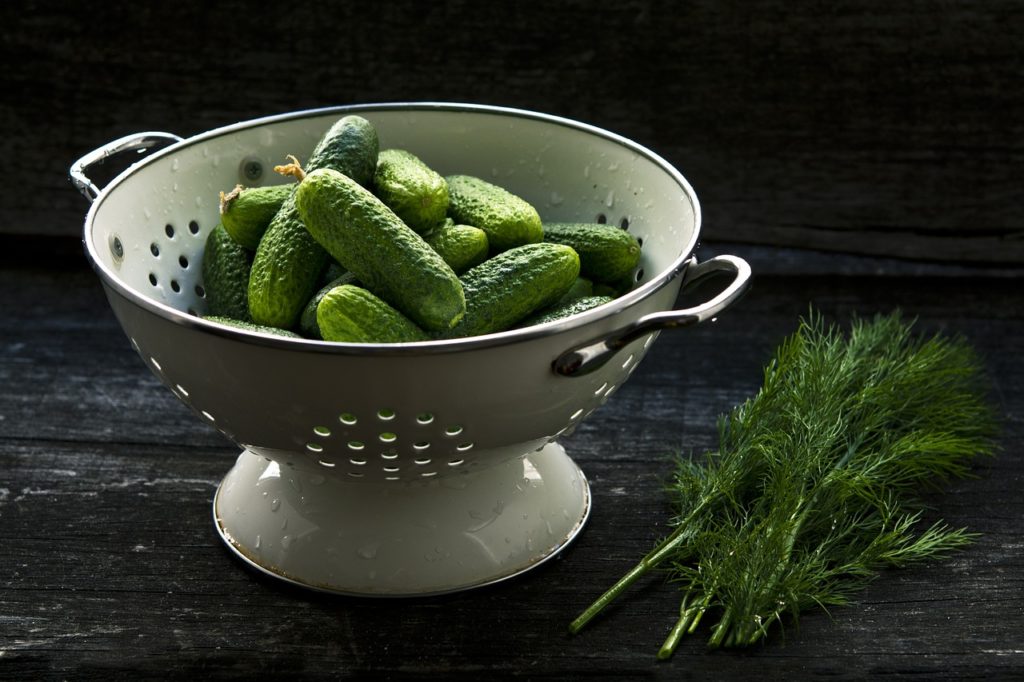Sugar has some unique properties that mean it can preserve food. It is used in jams, jellies, conserves, relishes, chutneys, cures and all sorts of processes that help to prevent food from spoiling.
How sugar preserves foods is quite simple, it is to do with how sugar and water interact.
Sugar preserves by removing moisture from the cells of the food being preserved. WIthout moisture, it makes it much more difficult for spoilage organisms to grow.
Table of Contents
Sugar Draws Moisture Out
Sugar is hygroscopic which means that it absorbs water. Much in the same way that salt draws moisture from whatever it is sprinkled on, sugar does a similar thing.
When water is drawn out of the cells of a piece of fruit it makes it much harder for any spoilage mechanism to have any effect.
Bacteria, enzymes and moulds that spoil foods need water to enable them to grow. Sugar removes this water away from the cells of the fruit and therefore it keeps the fruit from spoiling.
Sugar Combined With Other Preserving Methods
For sugar to be an effective preserving method it is combined with other means or process to prevent spoilage.
For example, jams and jellies have a really long shelf life because they use sugar as a preservative along with acidity and being stored in a sealed, airtight jar.

Airtight Jars & Canning
Jams, jellies and chutneys use sugar as a preservative. For these foods to remain spoilage free they have to be stored in airtight jars, a process called canning.
Sugar absorbs moisture from whatever it is in contact with including the air. If the jar is open the jam or jelly will attract moisture which can allow yeast or other micro-organisms to start growing. This is why commercial food produces have guidance on the jars that state they need to be eaten within a certain number of weeks.
As long as the container is airtight and sealed the contents will remain preserved for up to a year or more.
Acidity
Jams, Jellies and chutney all have high levels of acidity. The acid in them comes from either the ingredients themselves, such as fruit which has been reduced down or from acidity added with vinegar in the case of chutney, relish or sauces.
The acidity in jam and jellies help them to gel but this also relies on sugar. The sugar which is roughly around the same weight as the fruit in a recipe creates a gel when water is removed by boiling.
In this sense, the sugar and acid work together to preserve along with moisture being removed, both by the hygroscopic nature of sugar and boiling.
Sugar & Salt In Cures
Another example of sugar being used as a preservative is in cures for meat and fish.
Salt and sugar work, in the same way, to pull moisture out of meat and fish. Reducing the moisture content inhibit the growth of micro-organisms
A cure is made by combining salt and sugar (sometimes with curing salt) in the correct quantities, along with herbs and spices and being applied to meat.
Cures using sugar can either be mixed dry and rubbed onto the surface of the meat or added to a brine that the meat or fish is submerged in.
Sugar balances the harshness of the salt in a cure at the same time as making the meat or fish sweeter.
Sugar Syrup & Crystallisation
Foods are also preserved using sugar syrups or by crystallising.
When the sugar syrup is at a high enough concentration it inhibits bacterial growth. Honey is an example of a syrup that has a high enough concentration of sugar to prevent bacterial growth.
In most commercial fruits in syrup, the fruit is cooked in the syrup while packaged in an airtight container. Once opened the contents need to be eaten fairly quickly.

Crystallisation is when food is cooked in a sugar syrup, often repeatedly, until the water content is removed and replaced with sugar. Chestnuts, ginger or citrus peels are often crystalised, although they need careful storage as any moisture or humidity will be absorbed.
Sugar As A Preservative
Sugar has obvious health effects and in the modern world, we are not as reliant on long term preservation of food when we have refrigeration and fresh produce in supermarkets daily.
The level of sugar needed in order to preserve food properly is maybe one of the reasons there are limited examples around today. Jam & jelly are most peoples experience of foods preserved with sugar but it is a very good one.



